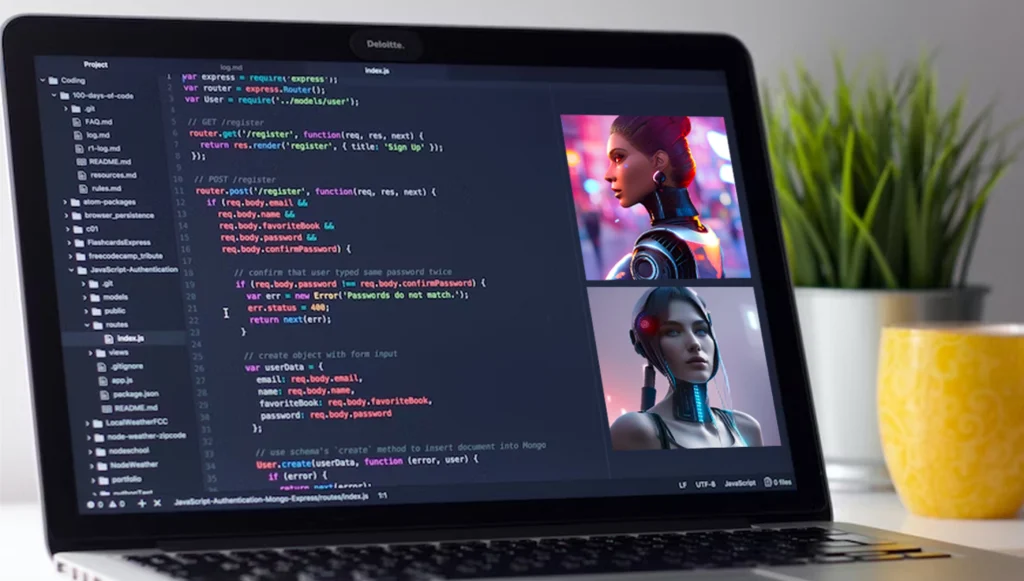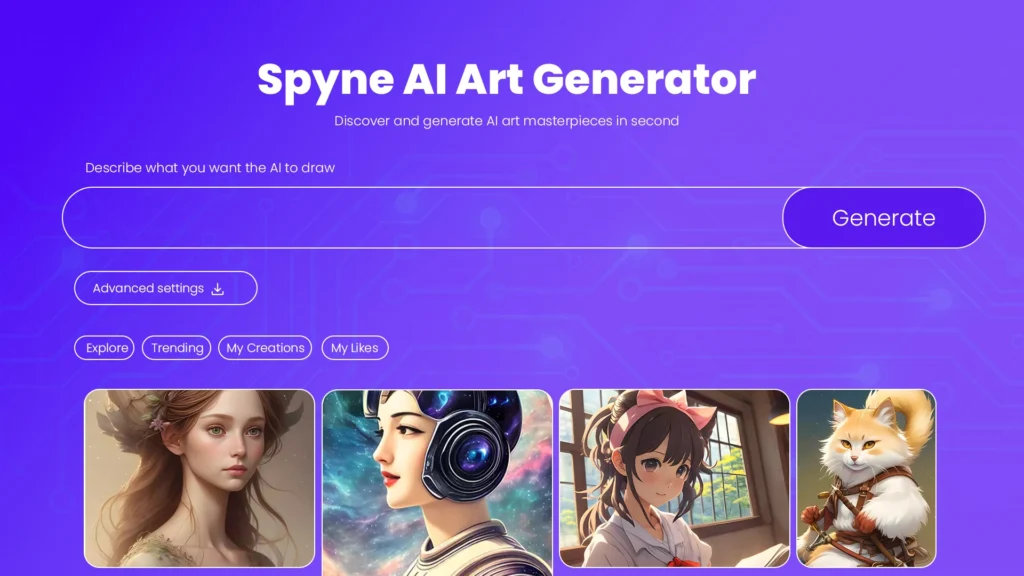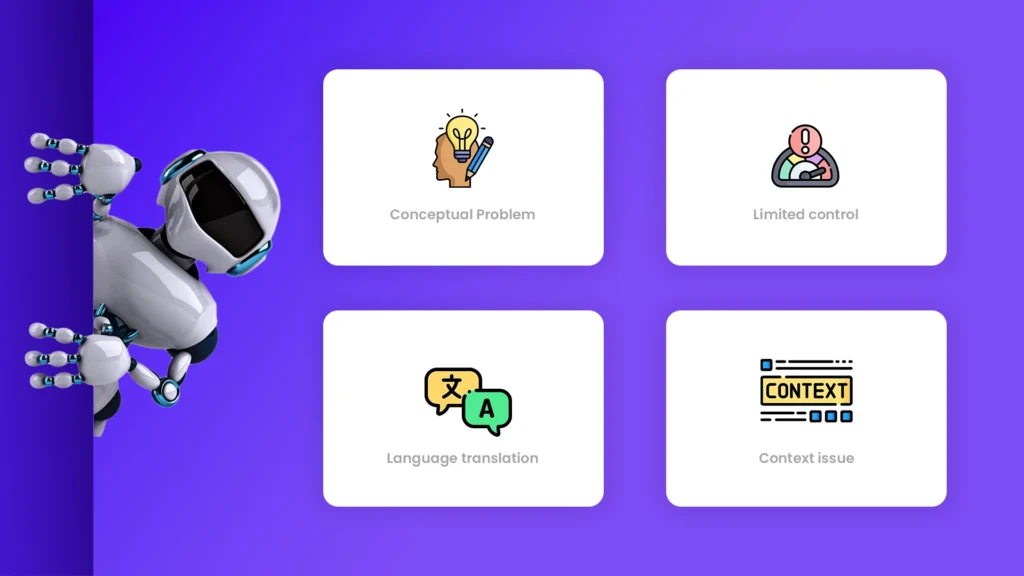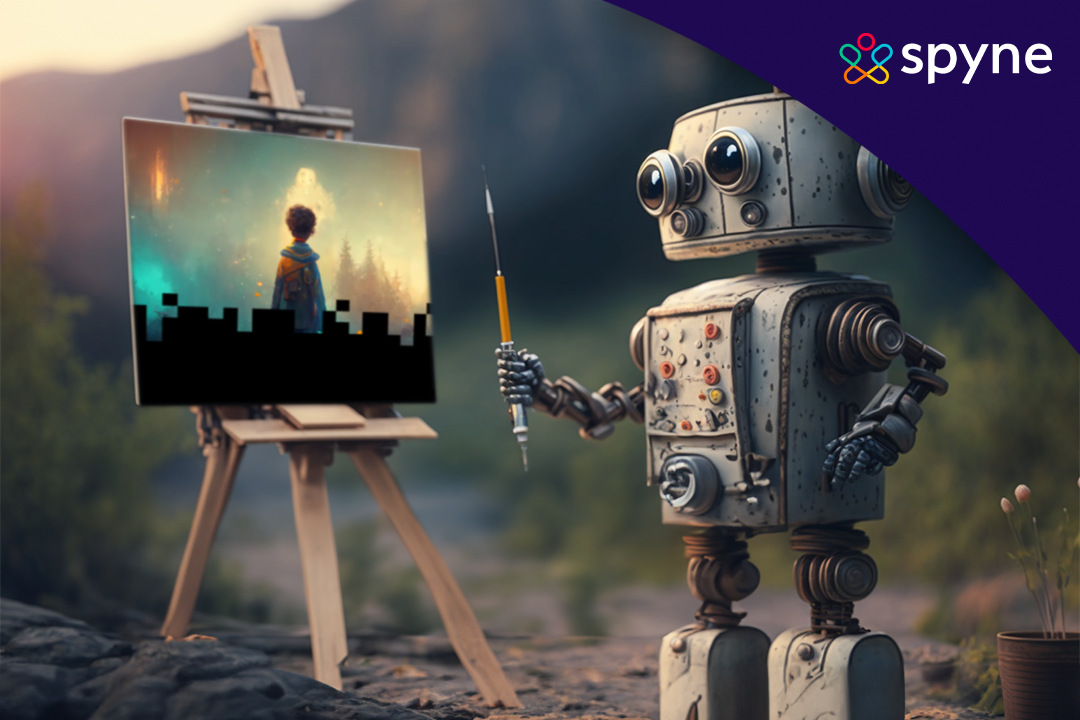In this digital era, art and technology have converged remarkably through artificial intelligence and have been using its astonishing capabilities. AI image generator can produce awe-inspiring pictures From algorithms trained on vast data and powered by deep learning techniques.
Today, in this article, we’ll discuss how AI blurs the line between human creativity and machine-generated art and opens avenues for artists and enthusiasts. Along with that, we’ll also explore a photo AI generator’s capabilities, features, techniques, and how you can use it across various fields, doesn’t matter if you are a photographer, editor, or artist.
What is AI Image Generator?
An AI photo generator is a powerful software that takes all your text prompts and analyzes them to generate an image that matches the prompt description in the best way possible. A text-to-image generator typically depends on neutral networks and complex mathematical algorithms to learn vast data and further utilize them to create diverse visual content.

However, an AI image creator consists of majorly two types of components. These are a generator and a discriminator that work collectively in a process known as generative adversarial networks( GAV) training. Here the role of a generator is to produce synthetic images, whereas a discriminator differentiates between the real image and the AI-generated one. It works efficiently by an iterative training process through which the generator aims at creating images that are indistinguishable from the real ones. Similarly, on the other side, the discriminator strives to improve the ability by identifying the generated images.
Moreover, an AI tool analyzes an image’s patterns, textures, and structures to create high-quality images. Such an evaluation and analysis help capture the intricate details and understand the context for producing visually coherent pictures.
Apart from this, one of the best parts is using an AI image generator free across various domains. You can also use AI photo editor which is provided by many image-generating tools. Be it creating realistic human faces, generating artistic images, synthesizing scenes and objects, and even producing surreal and imaginative compositions. You name it; they can expand visual expression’s boundaries.
Understanding Text-to-Image AI Generators
A text-to-image AI generator or AI art generator is one such tool that is quite fascinating to use. It is a subset of artificial intelligence with the power of natural language processing (NLP) and computer vision to convert textual descriptions into vivid visual representations.
One of the major advantages of this technology is that it fills the gap between language and visual content, making it possible to generate images solely based on the textual context. Behind this advanced technology lies sophisticated deep learning models, such as Generative Adversarial Networks (GANs) or Variational Autoencoders (VAEs). These AI models are trained on a vast dataset combining textual descriptions with corresponding images. This enables an AI tool to learn the complex text and visual content relationship.

Now, the process of image-to-text via AI image creation involves several steps. First, the text is transformed into a numerical representation through word embedding or recurrent neural networks (RNNs). Next, the generator component of the model synthesizes the visual out. Further, the discriminator component assesses the generated image’s authenticity, ensuring it resembles the intended visual concept.
An AI image generator from text holds significance in various fields for their application. From digital content creation, e-commerce, visual reality, and storytelling, they can be used for creating illustrative images for articles and product images based on description and aid in interactive storytelling experiences. A generator can also be used as AI image editor by providing changes.
These AI text-to-image generator tools have revolutionized the content creation field and opened up new opportunities for individuals with limited skill sets; however, they also have their fair share of challenges to process. One challenge that the advanced technology is still trying to overcome is generating images that align with the desired textual input and avoiding biases encoded in the training data.
How do AI image generators work?
Now that you have harnessed all the potential knowledge about AI image generators, their benefits, and possible applications, it is only time to go behind its work and see how an AI image generator works. We have learned that AI image generators such as Generative Adversarial Networks (GANs) and Variational Autoencoders (VAEs) work on deep learning techniques.
However, the underlying mechanism can vary depending on specific architectures. But here’s a basic and general overview of how AI picture generator work summarized step-by-step for better understanding.
Step 1: Training Data Collection
An AI image generator requires a dataset of real images to learn characteristics and patterns. Hence, a dataset pairs textual descriptions with the corresponding images. These data are clean and preprocessed, removing irrelevant or noisy information. Tokenization, removing stopwords, and text normalization are applied.
Step 2: Generator Network
The generator network is one of the most important components of an image generator AI. It is responsible for converting any random noise or an input signal and transforming it into a more enhanced visual image representation. Such transformation involves a series of learnable layers like convolutional neural networks (CNNs) or recurrent neural networks (RNNs).
Typically, the generator synthesizes the output image pixel-by-pixel, which can be refined and enhanced using post-processor, style transfer, or image manipulation algorithms.
Step 3: Discriminator Networks
Next is the discriminator network, whose primary function is to access and distinguish between real and AI-generated images. A discriminator network is a backbone for providing feedback to the generative network during training. It uses a binary classification objective and is trained by presenting a mix of real and AI-generated images. Accordingly, the discriminator’s accuracy is evaluated by correctly classifying the real and generated image.
Whereas the loss function of the discriminator network measures the discrepancy between the predicted and true labels (real or generated) for a given set of images used as a parameter during the training process.
Step 4: Training Process
During the training process, the generative and discriminator network works together competitively. This means that the generators are determined to produce enhanced images that fool the discriminator, whereas the discriminator aims to identify the real images from the generated ones accurately.
Moreover, while training the AI model, a paired text image dataset maps the textual descriptions present to the visual representations during training.
Step 5: Feedback Loop
For assessing the quality and fidelity of the generated images, a feedback loop between the generator and discriminator is operated to improve the quality of the images. It operates because, through multiple training iterations, the AI tool learns to produce increasingly difficult images for the discriminator to differentiate from real images. This iterative process helps improve the model’s ability to generate accurate and visually appealing images.
Step 6: Image Generation
Once the training is finished, the generator network is ready to create images based on an input signal, which can be anything from random noise to specific textual descriptions and other forms of low-dimensional representations.
Limitations of Image AI Generator
Surely, a text-to-image is based on very advanced and impressive technology. However, still there lies certain limitations that impact the performance and outcome.

Let’s explore the limitations that you might face while performing the text-to-image conversion.
- A limited context understanding primarily relies on the textural input to generate images. Hence, they need help understanding the broader context or the enhanced nuances in the text.
- One of the biggest limitations of this technology is the ambiguity and subjectivity factor. This is because the text could be subjective and open to interpretation. Additionally, ambiguous or metaphorical language can challenge the generator to translate text into visual representations.
- Another challenge text-to-image AI generators face is their need for more understanding of abstract concepts. A major reason behind such a challenge is that it needs concrete visual referents, and the generators may produce literal interpretations.
- Lastly, there’s limited control over details since the AI tools often lack fine-grained control over minute details such as precise object placements, composition, or lighting conditions.
Spyne AI Image Background Generator
The Spyne AI image background generator possesses powerful tools that utilize machine learning algorithms for automatically replacing and modifying the background of an image. It is one of the most convenient and efficient AI image generator app allowing users to create visually appealing compositions and meet the specific requirements for various applications.
Apart from that, some key features that define the Spyne AI image background generator are:
- Background Removal
- Background Replacement
- Realistic Blending
- Customization and Control
- Efficiency and Speed
- Integration and Accessibility
- Continuous Improvement
AI image background generators have revolutionized the way we manipulate and transform images. Moreover, their ability to automatically remove and replace backgrounds accurately and efficiently has transformed how we edit and enhance images. Our AI also works as an image shadow generator, easily adding realistic shadows to your images. By harnessing advanced algorithms and machine learning techniques, AI image background generators have made it accessible for users of all levels of expertise to achieve professional-grade results.
However, as technology evolves, We can further anticipate even more sophisticated and versatile AI image background generators to expand the possibilities of image editing and manipulation.
What Makes Spyne the Best AI Photo Background Generator?
There are several AI image generator software available on the internet. However, we strongly recommend using Spyne because it contributes to the effectiveness and quality of an AI photo background generator.
Let’s examine the factors that make Spyne one of the best AI image generator.
- Advanced AI Algorithms
- Realism And Quality
- Customization Options
- User-Friendly Interface
- Speed And Efficiency
- Compatibility And Integration
Our tool is an exceptional AI photo background generator due to its advanced algorithms, superior realism, and user-friendly interface. Its powerful background removal capabilities, like object remover, realistic blending techniques, and efficient processing, make it a top choice for professionals and enthusiasts. It enables them to transform images and achieve visually captivating results effortlessly. We offer a comprehensive solution for users seeking precise and visually appealing background replacements.
How to Create AI-Generated Images – Customization Tips
While AI image generators have multiple valuable creativity, true customization ensures that the generated images align more closely with your artistic intentions. Our aim is that through a range of customization tips and techniques, we empower you to harness the full potential of AI image generation and infuse your unique artistic vision into the process.
So, let us see what customization tips you can use to create AI-generated images.
- Dataset Selection
- Fine-Tuning
- Control Inputs
- Mixing Styles
- Modify Latent Space
- Post Processing
- Iterative Feedback
- Explore Model Variants
- Combine Human Creativity With AI
The customization tips for creating AI-generated images offer valuable insights into tailoring and personalizing the output. By understanding the nuances of dataset selection, fine-tuning, control inputs, and other techniques, users can harness the power of AI image generators to align with their artistic vision and truly create their images. By understanding the nuances of dataset selection, fine-tuning, control inputs, and other techniques, users can harness the power of image AI generator to align with their artistic vision and truly create their images.
Conclusion
As we conclude this blog series on demystifying AI image generators, we have witnessed the extraordinary fusion of art and algorithms. By harnessing the power of machine learning, these generators have redefined what it means to create art, pushing the boundaries of imagination and innovation.
AI image generators have proven to be more than just tools; they are catalysts for innovation, pushing artists to explore uncharted territories and challenge the conventional norms of artistic creation.
The synergy between human creativity and machine intelligence has given rise to a new wave of artistic expression, where algorithms are not just tools but active collaborators. As we continue to delve into the world of AI image generators, let us embrace the opportunities they present, challenge, and unlock the untapped potential of this fascinating intersection of art and algorithms.





























